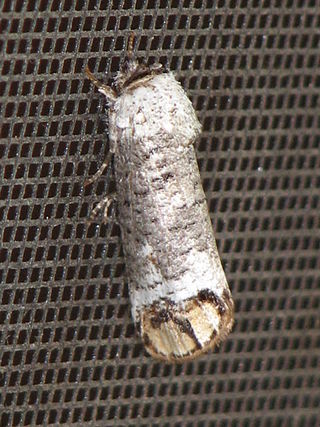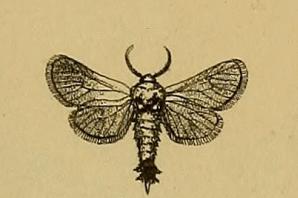
Ficus is a genus of about 850 species of woody trees, shrubs, vines, epiphytes and hemiepiphytes in the family Moraceae. Collectively known as fig trees or figs, they are native throughout the tropics with a few species extending into the semi-warm temperate zone. The common fig (F. carica) is a temperate species native to southwest Asia and the Mediterranean region, which has been widely cultivated from ancient times for its fruit, also referred to as figs. The fruit of most other species are also edible though they are usually of only local economic importance or eaten as bushfood. However, they are extremely important food resources for wildlife. Figs are also of considerable cultural importance throughout the tropics, both as objects of worship and for their many practical uses.

Pallas's sandgrouse is a medium to large bird in the sandgrouse family.

Ficus microcarpa, also known as Chinese banyan, Malayan banyan, Indian laurel, curtain fig, or gajumaru (ガジュマル), is a tree in the fig family Moraceae. It is native in a range from China through tropical Asia and the Caroline Islands to Australia. It is widely planted as a shade tree and frequently misidentified as the Balete tree: F. retusa or F. nitida.

Opuntia ficus-indica, the Indian fig opuntia, fig opuntia, or prickly pear, is a species of cactus that has long been a domesticated crop plant grown in agricultural economies throughout arid and semiarid parts of the world. O. ficus-indica is the most widespread and most commercially important cactus. It is grown primarily as a fruit crop, and also for the vegetable nopales and other uses. Cacti are good crops for dry areas because they efficiently convert water into biomass. O. ficus-indica, as the most widespread of the long-domesticated cactuses, is as economically important as maize and blue agave in Mexico. Opuntia species hybridize easily, but the wild origin of O. ficus-indica is likely to have been in central Mexico, where its closest genetic relatives are found.

Ficus sycomorus, called the sycamore fig or the fig-mulberry, sycamore, or sycomore, is a fig species that has been cultivated since ancient times.

The Cossidae, the cossid millers or carpenter millers, make up a family of mostly large miller moths. This family contains over 110 genera with almost 700 known species, and many more species await description. Carpenter millers are nocturnal Lepidoptera found worldwide, except the Southeast Asian subfamily Ratardinae, which is mostly active during the day.
Choreutis aegyptiaca is a species of moth of the family Choreutidae. It is found in the India, Nepal, Israel, Saudi Arabia, the United Arab Emirates, Yemen, Egypt, La Réunion, Nepal, Oman, Uganda, Namibia and South Africa.

Wiltshirocossus aries is a species of moth of the family Cossidae. It is found in southern Spain, on the Canary Islands, as well as in Mauritania, Israel, Saudi Arabia, Bahrain, the United Arab Emirates, Yemen, Oman, Algeria, Tunisia and Egypt. The habitat consists of deserts and semidesert areas.

Dyspessacossus fereidun is a species of moth of the family Cossidae. It is found in Turkey, Azerbaijan, Armenia, Iraq, Iran, Syria and Israel.
Cossulus sheljuzhkoi is a species of moth of the family Cossidae. It is found in Kazakhstan, Kyrgyzstan, Uzbekistan, Tajikistan and Israel.

Parahypopta caestrum is a species of moth of the family Cossidae. It is found on the Iberian Peninsula and in France, Italy, Austria, the Czech Republic, Slovakia, Hungary, on the Balkan Peninsula, as well as in Jordan, Israel, Syria, Iraq, Turkey, south-western Russia and Kazakhstan.
Eremocossus vaulogeri is a species of moth of the family Cossidae. It is found in Senegal, Mauritania, Morocco, Algeria, Libya, Tunisia, Egypt, Jordan, Israel, Syria, Egypt, Oman, Yemen, the United Arab Emirates, Saudi Arabia, Iraq and southern Iran.
Dyspessa pallidata is a species of moth of the family Cossidae. It is found in Transcaucasia, the Caucasus, Turkey, Iran, Jordan, Israel and northern Egypt.
Dyspessa kabylaria is a species of moth of the family Cossidae. It is found in Iran, Israel, Jordan, Tunisia, Algeria, Egypt and Saudi Arabia.

Stygioides colchica is a species of moth of the family Cossidae. It is found in Bulgaria, Greece, the southern part of European Russia, Ukraine, Turkey, Armenia, Lebanon and Israel.
Isoceras bipunctata is a species of moth of the family Cossidae. It is found in Georgia, Azerbaijan, Turkey, Iran, Lebanon, Jordan, Syria, Israel and Iraq.
Dieida ledereri is a species of moth of the family Cossidae. It is found in Iran, Syria, Israel and Turkey.
Phragmacossia territa is a species of moth of the family Cossidae. It is found in Lebanon, Syria, Israel, Jordan, Egypt, Iran, Turkey, Turkmenistan, Uzbekistan, Tajikistan and Kyrgyzstan.

Paropta is a genus of moths in the family Cossidae.
Dervishiya cadambae is a moth in the family Cossidae. It is found in India.









